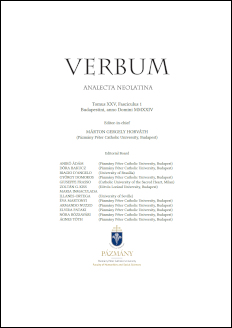Un objet bouleversant de Paul Nougé et de René Magritte : Le catalogue Samuel
Published 07-06-2024
Keywords
- surrealism,
- disturbing object,
- Paul Nougé,
- René Magritte,
- cultural industry
How to Cite
Copyright (c) 2024 Bence Matuz

This work is licensed under a Creative Commons Attribution 4.0 International License.
Abstract
This paper intends to treat a poetic experimentation of Paul Nougé and René Magritte, entitled Catalogue Samuel (1926). Our analyses consider this artefact trough the concept surrealist of object (objet boueleversant) and the contradiction between this concept and the conditions of cultural industry. As Theodor Adorno or Pierre Bourdieu considered it, this industry subsumes the particularities of artworks and literary texts, thus the creation of surrealist objects becomes problematic. Indeed, these objects are supposed to have particularities capable to overwhelm perceptive or cognitive habitudes of the addressee, which is not possible in conditions of industrialised cultural production, because this conditions include a schematic logic classifying and generalising artworks. In this study, we try to reveal the manner in which Le catalogue Samuel, as a surrealist object, can perform its subversive and overwhelming effects even in the environment of cultural industry.
References
- Benjamin, Walter (2013) : L’œuvre d’art à l’époque de sa reproductibilité technique (1935), trad. Frédéric Joly. Paris : Payot et Rivages.
- Bourdieu, Pierre (1969) : L’amour de l’art – Les musées d’art européens et leur public. Paris : Minuit.
- Bourdieu, Pierre (1971) : Le marché des biens symboliques. In : L’Année sociologique (1940/1948–) 22 : 49–126.
- Bourdieu, Pierre (1992) : Les règles de l’art. Paris : Seuil.
- Breton, André (1969) : Manifeste du surréalisme (1924). In : A. Breton : Manifestes du surréalisme. Paris : Gallimard. 7–64.
- Derrida, Jacques (2001) : L’université sans condition. Paris : Galilée.
- Geneviève, Michel (2011) : Paul Nougé, La poésie au cœur de la révolution. Bruxelles: Peter Lang. https://doi.org/10.3726/978-3-0352-6396-1
- Gutt, Tom (1996) Ces belles fleurs du charbon. In : P. Nougé & R. Magritte : Le catalogue Samuel (1926). Bruxelles : Didier Devillez, Collection fac-similé. 5–31.
- Heidegger, Martin (1946) : Lettre sur l’humanisme, trad. Roger Munier. Francfort-sur-le-Main : Vittorio Klostermann.
- Horkheimer, Max & Adorno, Théodore W. (1974) : La production industrielle de biens culturels. In : M. Horkheimer & Th. W. Adorno : La dialectique de la raison (1944), trad. Éliane Kaufholz. Paris : Gallimard. 179–247.
- Lefebvre, Henri (1961) : Critique de la vie quotidienne, Fondements d’une sociologie de la quotidienneté. Paris : L’Arche.
- Nougé, Paul (1980) : Les images défendues (1933). In : Paul Nougé : Histoire de ne pas rire. Lausanne : L’Age d’homme. 235–238.
- Nougé, Paul & R. Magritte (1996) : Le catalogue Samuel. Bruxelles : Didier Devillez, Collection fac-similé.


